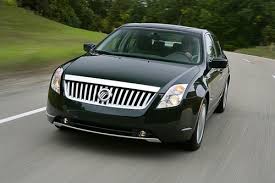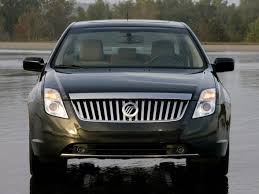The Mercury Milan builds on a strong foundation of quality and reliability, adding to the mix for the 2010 model year an all-new hybrid model, more fuel-efficient gasoline powertrain options, class-exclusive technologies and a more refined, sophisticated design.
"The Milan has been a strong part of the Mercury lineup since its initial launch and has helped attract more consumers to dealer showrooms," said John Felice, general manager, Ford, Lincoln Mercury Marketing. "For sophisticated consumers looking for a stylish hybrid, the Mercury Milan now offers them the most fuel-efficient hybrid sedan in its class."
Chief designer Darrell Behmer and his team had the advantage of working from a vehicle that's been lauded by consumers and consumer groups. "Our approach was to build upon the Milan's strengths - to improve rather than reinvent," Behmer said. "From a design standpoint, we wanted to clarify the design, making it cleaner and more modern."
The changes to the exterior design were focused on the grille, fenders, hood, and front and rear fascias. The chin was pulled forward and the fascia was pulled down to give the 2010 Mercury Milan a wider, sportier look. Those changes as well as substantial underbody work made for a cleaner, more aerodynamic car.
With all models, the interior design team created a more contemporary, technical look with metallic new finishes on the instrument panel that carry through on the center console, doors and steering wheel. The all new instrument panel is finished with a soft upper and lower skin and has much less hard plastic than Japanese competitors. A redesigned leather wrapped steering wheel with form fitting palm swells, and new shifter, and wrapped and padded armrests have been added, increasing the Milan's sportiness and comfort at all key driver touch points.
The seats received a makeover, as well. The seat contour has been revised, with more side support and overall a more comfortable seat with smoother bolsters and more-textural inserts. The seats also feature contrasting stitching and leather inserts to give the Mercury Milan even more attitude, befitting this mid-size sedan.
The gauge cluster has been designed with day time backlighting, a black lens, and 3-D elements to create a high tech jewel-like appearance, similar to a fine watch. Drivers will be greeted by a new "welcome" sequence that makes the Mercury Milan seem as if it's coming to life.
Gauge needles sweep back and forth as the lighting and new chimes come on. The ambient lighting system offers the option of illuminating the front and rear footwells and front cup holders.
The two-tone look on the interior continues as a Mercury Milan signature, with satin-aluminum accents and a wood finish around the center stack. The Milan features Dark Charcoal Black, Medium Light Stone and Camel as interior choices through the Premier Series, which includes embossed leather.
An improved seat design with a new perforation pattern has been added as well. The seat contour itself was revised, with more side support to help create a softer seat overall.
All-new hybrid model
For the 2010 model year, the Mercury Milan adds an all-new hybrid model. The Ford Fusion Hybrid and Mercury Milan Hybrid join the Ford Escape and Mercury Mariner Hybrids, doubling both the size and volume of Ford's hybrid lineup.
"Offering consumers more fuel-efficient vehicle choices, including improving and increasing our hybrid vehicle offerings and improving our high volume gasoline powertrains, is part of Ford's broad plan to deliver technology solutions for affordable fuel economy for millions," said Derrick Kuzak, Ford's group vice president for Global Product Development.
"With the new Ford Fusion Hybrid and Mercury Milan Hybrid, we are now able to offer even better range of travel on battery power at a greater speed, thanks to a more efficient, seamless transition between the battery-powered motor and gasoline-driven engine," he said. "These new hybrids will exceed expectations on all fronts - fuel efficiency, comfort, convenience and drivability."
The Ford Hybrid team has developed a powertrain system that combines the best attributes of the gasoline engine and electric battery-driven motors to deliver the optimal experience for the customer in terms of driving performance and fuel economy.
Additionally, the propulsion system for the Mercury Milan Hybrid and Ford Fusion Hybrid transitions between gas and electric power and back more efficiently and seamlessly.
The overall system upgrade allows the Mercury Milan Hybrid and Ford Fusion Hybrid to operate longer at higher speeds in electric mode. The hybrid vehicles can operate up to 47 mph in pure electric mode, approximately twice as fast as some competitors. Plus, the city driving range on a single tank of gas is expected to be more than 700 miles.
The next-generation hybrid system features:
New 2.5-liter 4-cylinder engine (155 horsepower/136 lb.-ft. of torque) running the proven Atkinson cycle mated to an electronically-controlled continuously variable transmission or e-CVT.
Intake Variable Cam Timing (iVCT), which allows the vehicle to more seamlessly transition from gas to electric mode and vice-versa. The spark and cam timing are varied according to the engine load to optimize efficiency and emissions.
Enhanced electronic throttle control reduces airflow on shutdowns, reducing fueling needs on restarts.
A wide-band lambda sensor analyzes the air-fuel ratio and adjusts the lean/rich mixture accordingly to keep the system in balance and to minimize emissions.
A new smaller, lighter nickel-metal hydride battery has been optimized to produce 20 percent more power. Improved chemistry allows the battery to be run at a higher temperature and it is cooled using cabin air.
An added variable voltage converter boosts the voltage to the traction battery to operate the motor and generator more efficiently.
A new high-efficiency converter provides 14 percent increased output to accommodate a wider array of vehicle features.
Smarter climate control system monitors cabin temperature and only runs the gas engine as needed to heat the cabin; it also includes an electric air conditioning compressor to further minimize engine use and maximize comfort.
The regenerative brake system captures the energy normally lost through friction in braking and stores it. Nearly 94 percent energy recovery is achieved by first delivering full regenerative braking followed by friction brakes during city driving.
A simulator brake actuation system dictates brake actuation and delivers improved brake pedal feel compared to the previous generation braking system.
"Because our hybrid can run at a much higher speed in electric mode, you can do so much more in city-driving situations," said Gil Portalatin, Hybrid Applications Manager. "Under the right conditions, you can drive in your neighborhood or mall parking lots without using a drop of gasoline."
The Mercury Milan Hybrid also offers drivers a way to be more connected to the hybrid driving experience thanks to Ford's SmartGauge with EcoGuide, a unique instrument cluster execution that helps coach them on how to optimize performance of their hybrid.
SmartGauge with EcoGuide features two, high-resolution, full-color liquid crystal display (LCD) screens on either side of the analog speedometer that can be configured to show different levels of information, including fuel and battery power levels, average and instant miles-per-gallon. Growing leaves and vines track and reward the driver's efficiency.
EcoGuide uses a multi-layered approach to coach the driver to maximum fuel efficiency. A tutorial mode built into the display that helps the driver learn about the instrument cluster and the hybrid in a whimsical way that does not overpower.
For instance, drivers can choose one of four data screens to choose the information level displayed during their drives. They are:
Inform: Fuel level and battery charge status
Enlighten: Adds electric vehicle mode indicator and tachometer
Engage: Adds engine output power and battery output power
Empower: Adds power to wheels, engine pull-up threshold and accessory power consumption
All levels can show instant fuel economy, fuel economy history, odometer, engine coolant temperature, what gear the car is in and trip data (trip fuel economy, time-elapsed fuel economy and miles to empty). The engine coolant temperature indicator turns green when engine conditions are warm enough to allow engine pull-down.
Several other elements help differentiate the Mercury Milan Hybrid from its gas-powered sibling, including unique hybrid "road and leaf" badging on both sides and the rear of the vehicle; unique 17-inch, eight-spoke wheels; eco-friendly seat fabric made from post-industrial 100 percent recycled materials; and a standard 110-volt power outlet.
More horsepower, better fuel economy
Both the inline four-cylinder and V-6 engines are upgraded, with the four-cylinder engine increased to 2.5 liters and the 3-liter V-6 increasing its horsepower rating from 221 to 240. Each engine improves fuel economy as well, up to 4 or 5 mpg depending on the model.
The 2.5-liter I-4 engine, which improved its 0-60 mph time by more than 1 second to achieve best-in-class performance, is available with either a six-speed manual or automatic transmission, up from five speeds.
"The gear ratios and the overall span of the transmissions allow us to have a more-efficient shift schedule," said Matt Hettenhouse, powertrain team leader for the Milan. The first gear can be made a little deeper, which provides smoother acceleration. At the top end, a higher gear allows the engine to run slower in highway conditions, which also aids fuel economy.
The innovative Easy Fuel™ capless fuel filler system also is standard. This industry-exclusive feature helps to reduce evaporative emissions that create smog and global warming. When fueling is completed, and the fuel pump nozzle is removed, the system automatically seals shut.
Better handling in a quieter, more-comfortable ride
Bringing a premium driving experience to the Mercury Milan was one of the goals for the team. For the 2010 model, strides were made in steering and handling, turning circle (better by about 1 foot) and an improved brake pedal feel. Upgraded 17-inch painted aluminum wheels are another performance and appearance enhancement standard on the Premier.
The 2010 Mercury Milan team also took a look at how to improve the comfort of the car. "We made a major improvement on interior quietness," said Chief Engineer J.D. Shanahan. Hood insulators, inner and outer dash absorbers, new carpet, revised ceiling baffles, additional sound deadening in the trunk, new interior material and new headliner material are among the improvements made.
In addition, improved body and door sealing defends and improves upon Milan's best-in-class standing in wind noise. Reductions in wind noise and road noise gives Mercury Milan drivers the level of quiet luxury they demand.
With design refinements to the exterior creating a sportier look as well as upgraded technology and materials inside, the 2010 Mercury Milan expands on the value package that makes it a leader in the mid-size car segment.
Staying connected
New technology features available on the 2010 Mercury Milan include:
Blind Spot Information System (BLISTM) with Cross Traffic Alert, which can help provide extra confidence to drivers in parking lots by alerting drivers sooner of nearby traffic while backing out. It uses two multiple beam radar modules, which are packaged in the rear quarter panels. The radar detects moving objects within a 65-foot range from either side of the vehicle. The radar identifies when a vehicle enters the defined blind spot zone and illuminates an indicator light on the corresponding side-view mirror providing a warning that a vehicle is approaching. An audible alert is sounded as well.
SYNC: The voice-activated hands-free in-car communication and entertainment system developed by Ford and Microsoft. The system fully integrates most Bluetooth-enabled mobile phones and digital media players, providing customers hands-free cell phone and music selection capabilities - plus new 911 Assist and Vehicle Health Report provided with no monthly fees.
911 Assist: When a phone is properly paired, turned on and connected to SYNC, the system is ready to assist in placing a call directly to a local 911 emergency operator in the event of an air bag-deploying accident. The key advantage of SYNC 911 Assist is speed, as calls are placed directly to local 911 operators.
Vehicle Health Report (VHR): SYNC gathers relevant information from the major vehicle control modules and packages diagnostic data into a usable format in a matter of minutes. That data packet is sent to Ford via an 800-number automatically dialed using the customer's paired and operable mobile phone.
Voice-Activated Navigation, which integrates several functions including voice recognition destination entry, climate control and SIRIUS satellite radio into one easy-to-use system, displaying them on an 8-inch touch-screen display. The navigation system's text-to-speech function calls out street names while in route to a destination and reads incoming text messages when the system is linked to SYNC. The integrated DVD player is capable of reading CD-Audio, MP3 CDs, DVD, DVD-Audio and DVD-ROM (for digital map updates). A music jukebox function stores more than 150 hours of music. The screen even can be customized with personal photos.
SIRIUS Travel Link™, an industry-leading technology that, when combined with the voice-activated navigation system will provide users with real-time traffic data with accident and incident information, coast-to-coast weather data including current conditions and five-day forecasts, and fuel price information for over 120,000 gas stations. Travel Link also offers sports scores and schedules and a listing of more than 4,500 movie theaters with movie times, theater addresses, movie synopses and more.
Reverse Camera System, which mounts a small camera on the spoiler that is activated when Mercury Milan is shifted into reverse, giving the driver a clear view behind the vehicle.
The video image is displayed in the optional navigation screen on Milans equipped with that option or in the self-dimming rearview mirror vehicles without navigation.
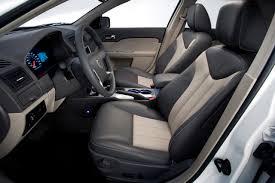
'

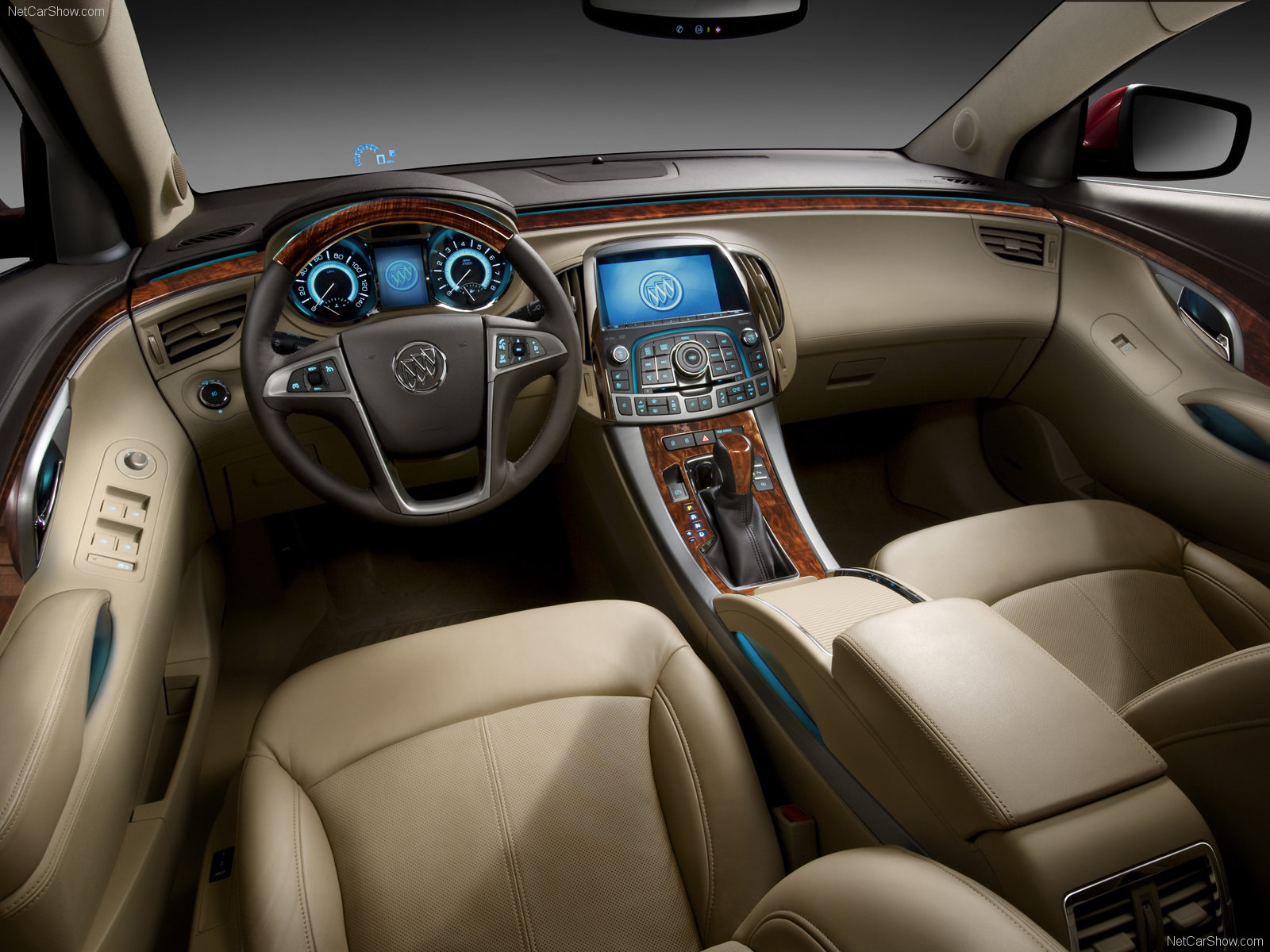



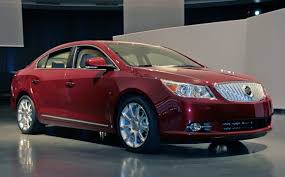
























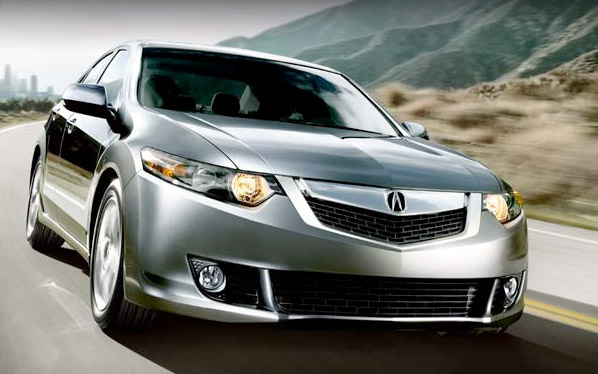

















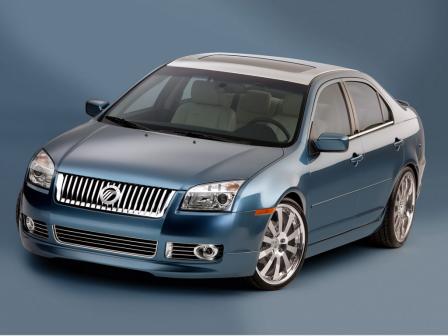




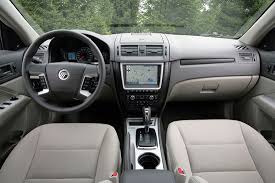
 '
'